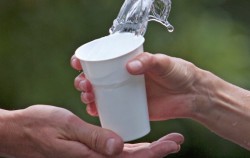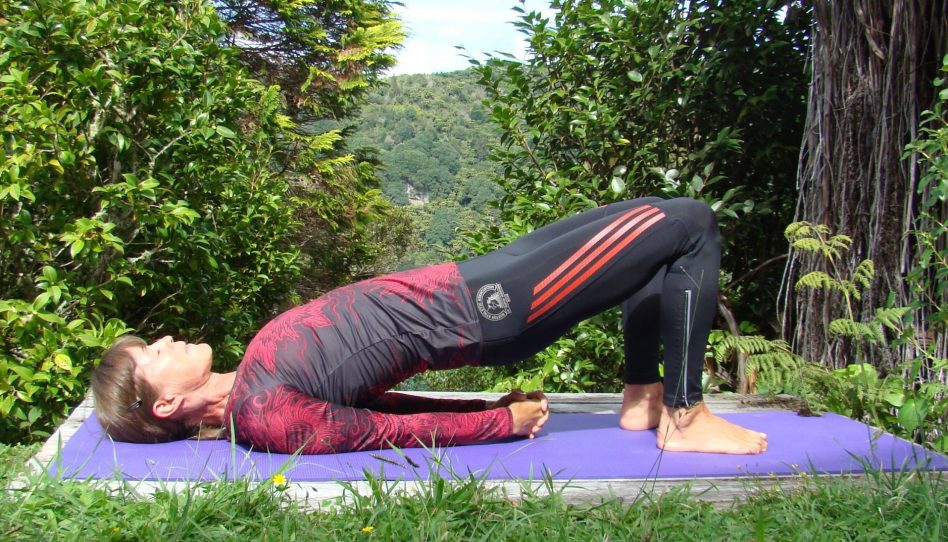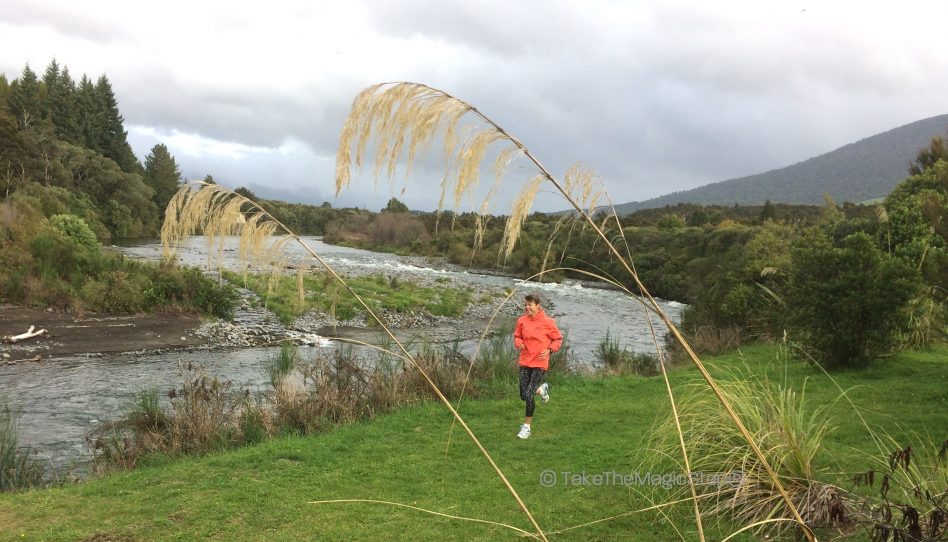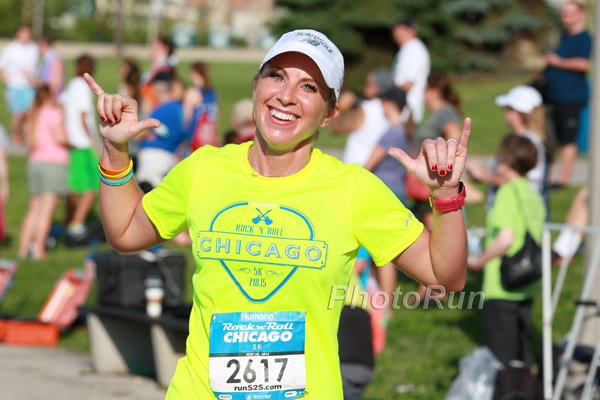How to Hydrate Properly on Warm Summer Workout Days
Uta Pippig is a three-time champion of the marathons in Boston and Berlin, winner of the NYC Marathon, writer and public speaker for “Take The Magic Step®” and “Running to Freedom™.” She is now also writing for the German daily newspaper “DIE WELT.”
Today’s water level report: You are well hydrated! Are you? Yes, because you leave nothing to chance when it comes to adequate fluid intake—you know that health and performance depend on it. This is particularly important on warm summer days: before, during, and after physical activities.

During my career I collected and successfully used some practical hydration methods. But when I neglected my own advice on hot days I bitterly paid for it by not being able to finish my training at the level I had planned. Let’s take a look at some scientific data first. It will help us to train more efficiently, especially in summer.
In a well-hydrated state our body consists of up to 75 per cent water—with children being the highest. Elderly and overweight people are the lowest-hydrated with less than 50 per cent. Women have five to ten per cent less water compared to men of the same age, and average 60 per cent water content at middle age because of their lower muscle and higher body fat content. The water content of our muscles is about 80 percent, while that of the adipose tissue is only 10 percent. So it is not surprising that studies of trained male runners of this age group showed 70 percent water content of their bodies.
Even a small fluid loss weakens different body functions, including physical performance. Signs of dehydration can include: thirst, extremely colored urine, lack of attention, motivation, coordination, fatigue, dizziness, muscle cramps, and increased pulse. Too much water loss can be dangerous to life. We can live for a few weeks without food, but only for a few days without water. Caution: Too-high water intake can lead to a deficiency of salts, a condition called hyponatremia and should be taken very seriously.
Proper Hydration Can Make the Difference
In sport, optimal hydration is a basic prerequisite for good results in training and competition. The dehydration symptoms mentioned above can significantly affect performance—make the difference between victory and defeat. Tests with runners have shown that a loss of water of only 1.5 to 2.0 percent of body mass, which is about 2.0 to 3.0 pints in the case of a 154-pound athlete, can be associated with significant drops in the level of performance. The increasing dehydration makes the blood “thicker” and harder to flow, which leads to organs and muscles getting less oxygen.
To avoid this situation, take more liquid on warm days. I have learned that sometimes up to four pints more, drunk over time, are necessary. The additional amount can vary greatly depending on the temperature, humidity and the intensity of the training program, as well as gender, age, and the level of fitness.
When Your Training Session Exceeds One Hour

Basic rule number one: Begin your training well prepared and sufficiently hydrated. Drink smaller amounts during the two to three hours before your workout. Avoid drinking in the last half hour to spare yourself the additional walk to the bathroom. A small refreshment is, of course, okay.
In the case of training sessions that last longer than one hour or very intense workouts under hot and humid conditions, it is advisable to drink enough fluids during the actual training session. I prefer isotonic sports drinks; they are absorbed faster into the blood (equal osmotic pressure) because of their specific particle concentration, thus ensuring the fastest possible hydration.
When you plan to run on the track or are accompanied by a partner, this is easy to organize. Otherwise, use a commercially available belt to which you can attach several small water bottles. Anyone who wants to make the effort—and I think it’s worth it—can place several bottles at selected points around a loop course. Allow time for drinking. If it is pure water and there is any left, just pour it over your head as a cooling agent. And after my run is over, I start rehydrating immediately—or at least within the first 30 minutes. I often eat a piece of watermelon to replace easily digestible carbohydrates which were depleted during the workout.
Which Drink is Best for You?

As soon as I get up in the morning, I drink one to two cups of water with freshly squeezed lemon juice. It contains many vitamins and minerals, tastes fresh, ensures rapid rehydration and helps the body to detoxify.
During the day and at night, I also drink pure water, herbal teas and freshly squeezed vegetable and fruit juices. Pure fruit juices contain a high amount of sugar, which is why I dilute them with one half to two thirds water. Herbal and green teas are excellent and contain little or no caffeine. My favorite summer refreshments are homemade unsweetened iced teas, especially with mango and passion fruit flavor. Tart cherry juice helps runners to recover faster. If you eat foods with a high water content, such as fruits, vegetables, soup or smoothies, your need to drink fluids is lessened.
To summarize: Listen to the signals of your body on warm days when you are training with high physical stress and increased sweating. Thirst is a reliable indicator—not to be ignored—that your body is telling you to immediately take in fluids. Make sure you are well-hydrated before every workout. Drink every 20-30 minutes during long training sessions. And finally, the color of your urine is a good marker of the degree of hydration—light yellow is okay, while darker color than usual, not as a result of certain foods, means fluid deficiency.
I wish you a balanced, well-hydrated, and wonderful summer!
Yours,

Adapted from my column „Fitness-Training – so trinken Sie richtig“ in DIE WELT with permission.
*Uta Pippig, 51, is one of the most successful female marathon runners of the ’90s. She has won Berlin and Boston three times each. Today she lives in Berlin, Germany, and in Boulder, Colorado, and with her organization “Take The Magic Step®” she commits herself to increasing people’s awareness in the areas of fitness, nutrition and health.
Reading Suggestions:
- Water [Part 1]: The Essence of Life
- Running on Warm Summer Training Days
- More on post-workout nutrition and recovery: Part II—Post-Exercise Nutritional Routine and Hydration
- Posted June 21, 2017
© Copyright 2017-2025 Uta Pippig and Take The Magic Step®. All Rights Reserved.
More Insights

Uta’s Favorite Exercises to Improve Your Fitness and Running Technique
Uta Pippig has designed an at-home fitness program which only uses your own body weight, steps, and a Theraband. They are eight exercises that Uta often does herself.
Uta’s Yoga and Stabilization Guide for a Better Running Technique
Runners, especially, can benefit from a well-balanced yoga and stabilization program. Uta suggests effective combinations of poses and exercises that have helped her gain the flexibility and balance that can lead to a better running technique for everyone.
How a Clever Mental Focus Can Get You Through Running Injuries
Running injuries can be devastating, but learning to focus mentally can speed up the healing process. Uta explains how the forced break from running can actually provide future benefits.